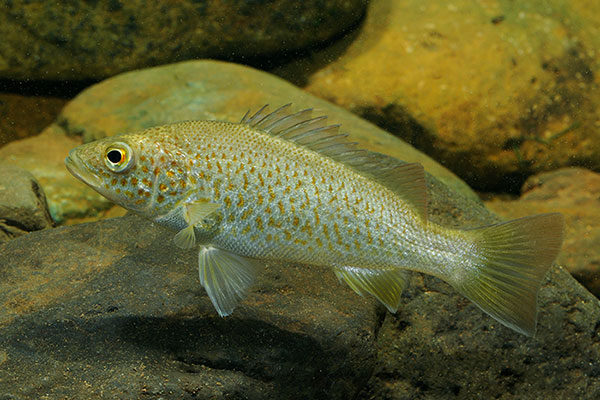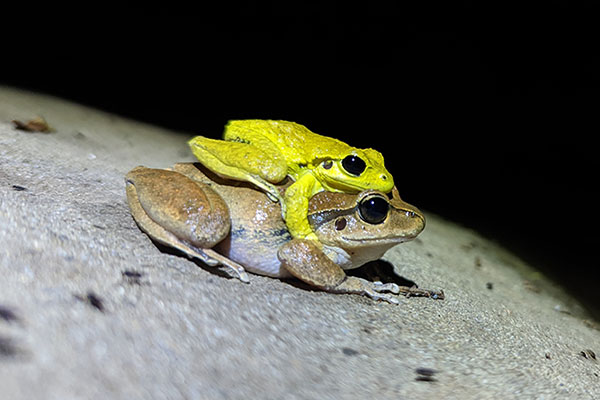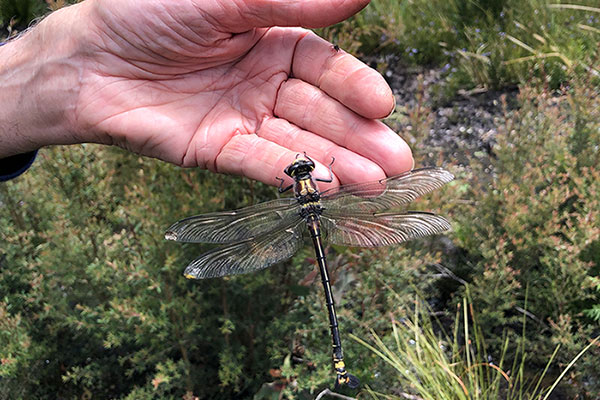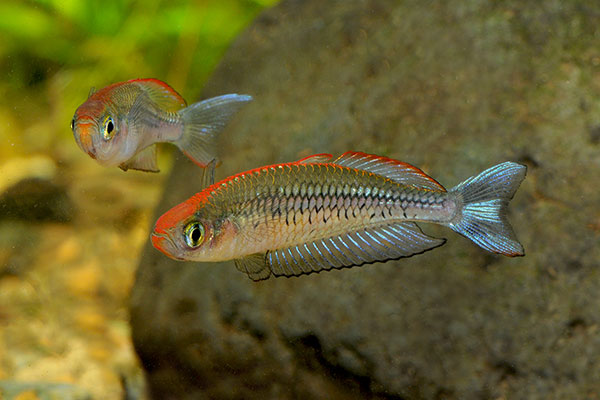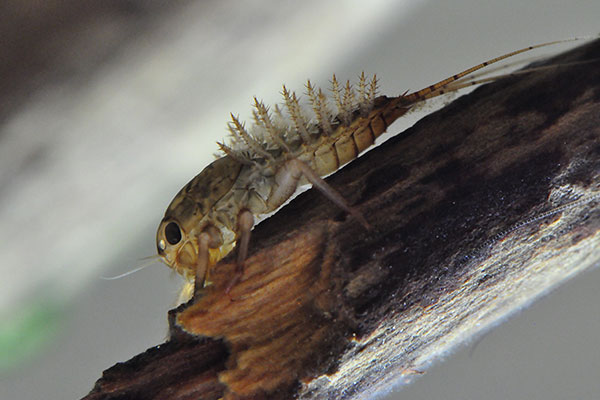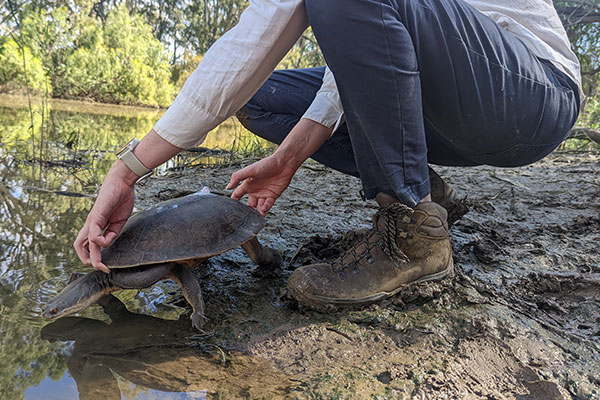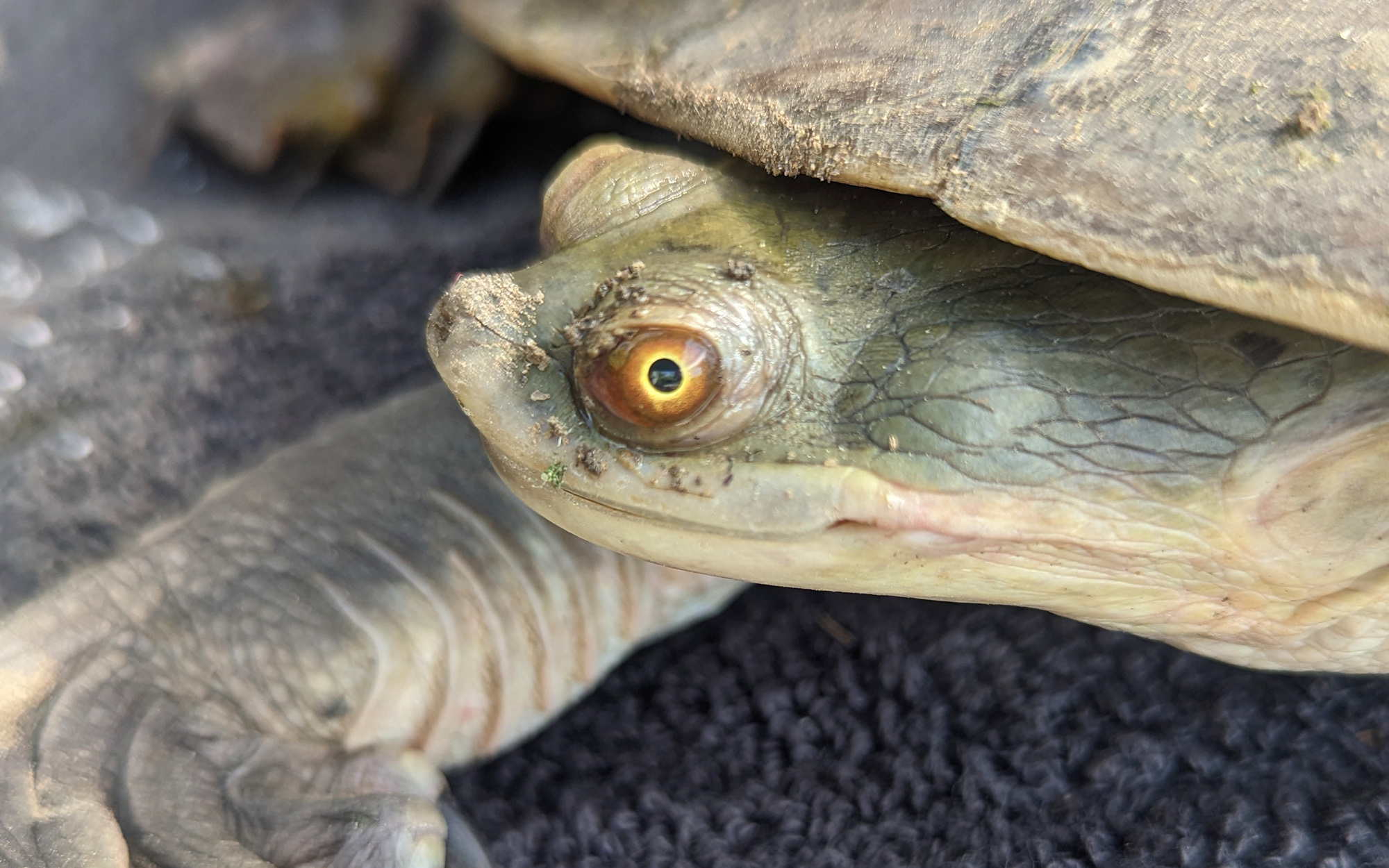Why monitor water-dependent fauna?
Water-dependent fauna such as fish, turtles, frogs, invertebrates, waterbirds and aquatic mammals (e.g., platypus) rely on healthy surface water environments to survive and thrive.
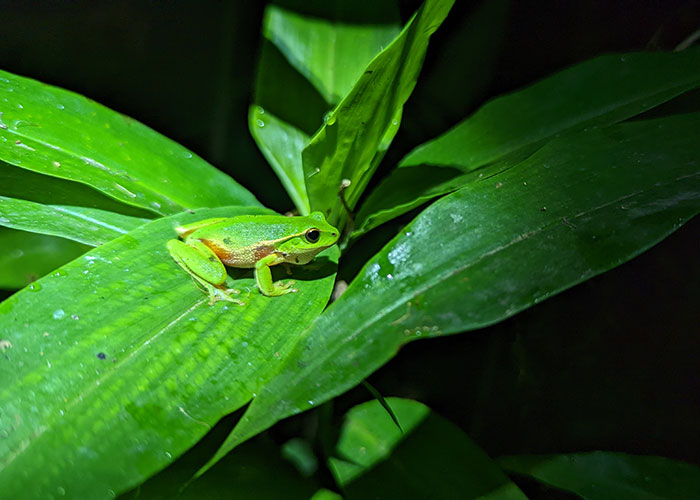
River flow is critical to the health of these environments and plays a crucial role during the life of these fauna. For example, some fish respond to rising rivers and use these events to move up and downstream for breeding and to access new habitat. Many stream frogs require flowing water between pools to breed and reach maturity once they complete the tadpole life stage. Aquatic insects are highly susceptible to low flows, and often drive food webs as a key resource for larger fauna.
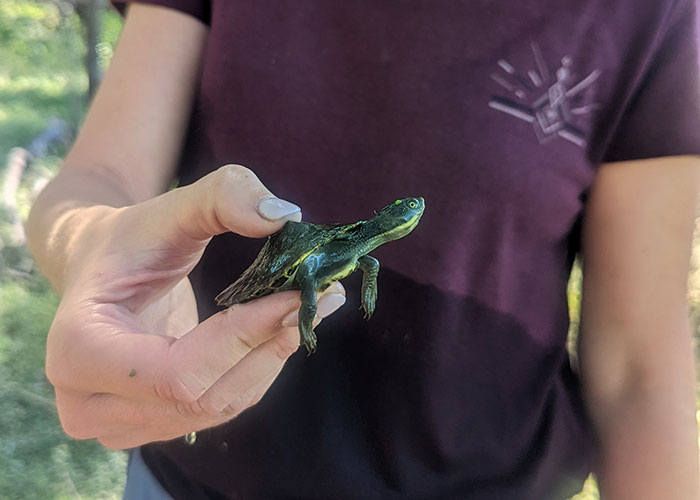
It is important that we know how and why water-dependent fauna respond to changes in flow conditions and the outcomes of relevant flow management actions for these animals. This will allow us to make informed management decisions that ensure the health of the animals that rely on water ecosystems.
To help us understand water-dependent fauna response to changes in flow conditions, we are using several techniques such as, population surveys, environmental DNA (eDNA) and acoustic tracking to measure the distribution, movement and population structure of various water-dependent fauna.
2021-22 Water dependent fauna annual report
The 2021-22 water dependent fauna annual report introduces projects that have commenced or were further developed during the first year of the Environmental Outcomes Monitoring and Research Program.
Read the report2021-2022 annual report project highlights
- Two projects look at the distribution and movement of fish in NSW rivers. Golden perch movement in the Murray-Darling Basin and Native fish monitoring in coastal NSW, illustrate the use of two novel methods for fish detection.
- The Freshwater turtle movement in the Gwydir trials the use of radio tracking of two species of native turtles.
- The Environmental flow requirements for stream frogs project looks at the water requirements of stream frogs and how we are using data from the citizen science project Frog ID run by the Australian Museum.
- As insects are a very important part of the food chain in aquatic habitats, there are six individual projects looking at macroinvertebrates.
- The macroinvertebrate responses to flows project looks at species composition in relation to flows_
- The role of low flow access rules in protecting macroinvertebrates project shows the importance of flows at maintaining healthy macroinvertebrate communities.
- The Snowy River environmental flow monitoring project looks at whether macroinvertebrate communities were restored after an environmental flow regime was introduced to the highly regulated Snowy River below Jindabyne Dam and Snowy montane rivers.
- The Impact of climate change on flow and temperature regimes – effects on alpine freshwater ecosystems project looks at whether increases of water temperatures and reduced flow from climate change and water regulation affect bottom dwelling invertebrate communities in the alpine rivers of Snowy Mountains.
- The River regulation and the impact on macroinvertebrate egg laying and recruitment project looks at whether altered flow regimes limit the supply of stream insect eggs in dammed rivers, by limiting the availability of egg laying habitat.
- The Giant dragonfly – assessing eDNA detectability and environmental water requirements project is trialling the use of a novel technique to sample this endangered species in its upland swamp habitat. - Two projects are included that look at fauna diversity in relation to aquatic habitats. The importance of floodplain pool habitats and hydrological regimes for fauna in the northern Murray-Darling Basin project looks at the influence of inundation history, water persistence, level of connectivity, and other pool features on floodplain fauna using eDNA. The Great Australian Wildlife Search using eDNA to detect native fish, platypus and other wildlife in rivers and streams with the help of citizen scientists.
